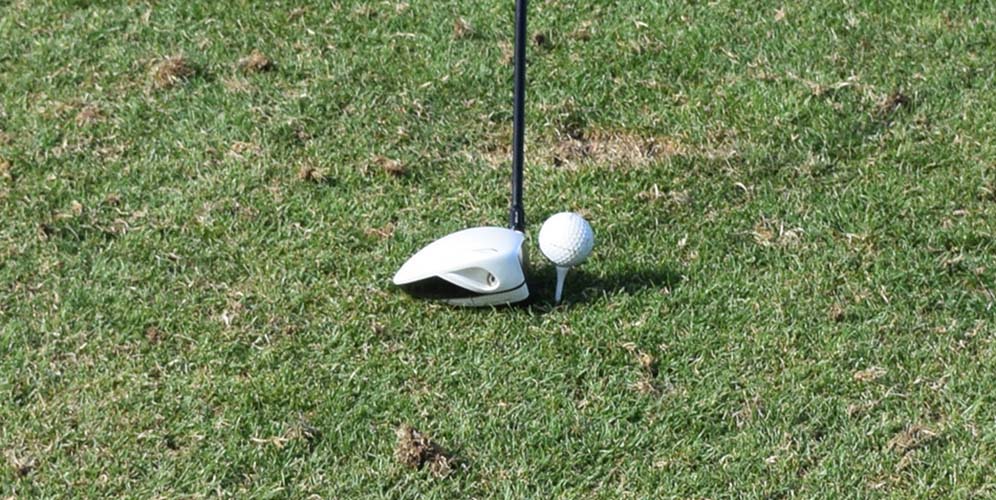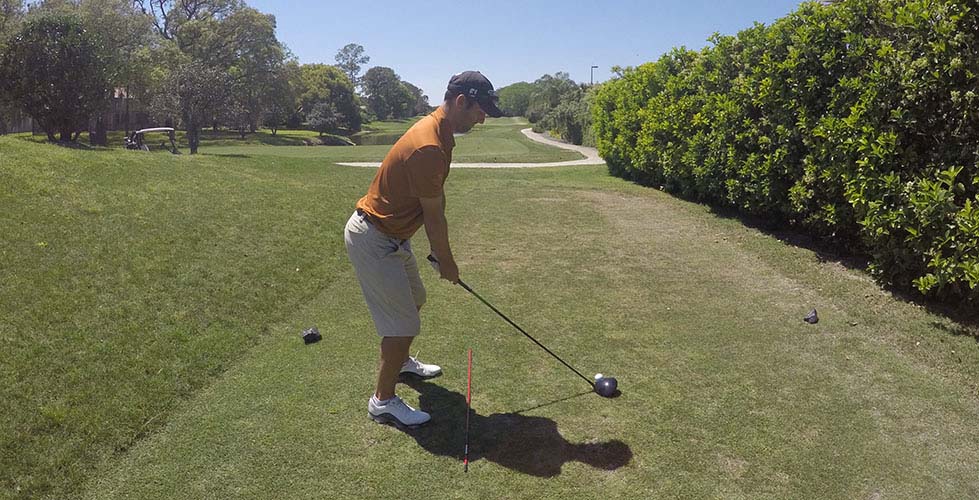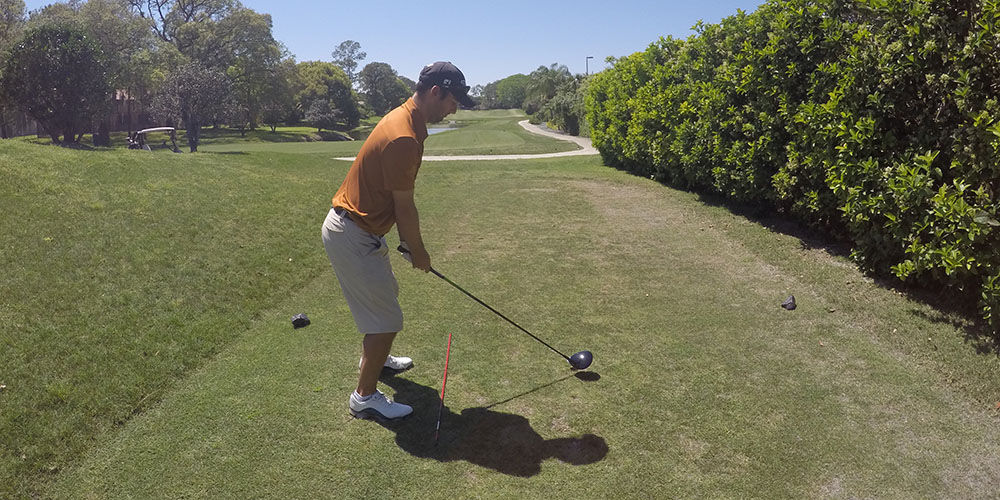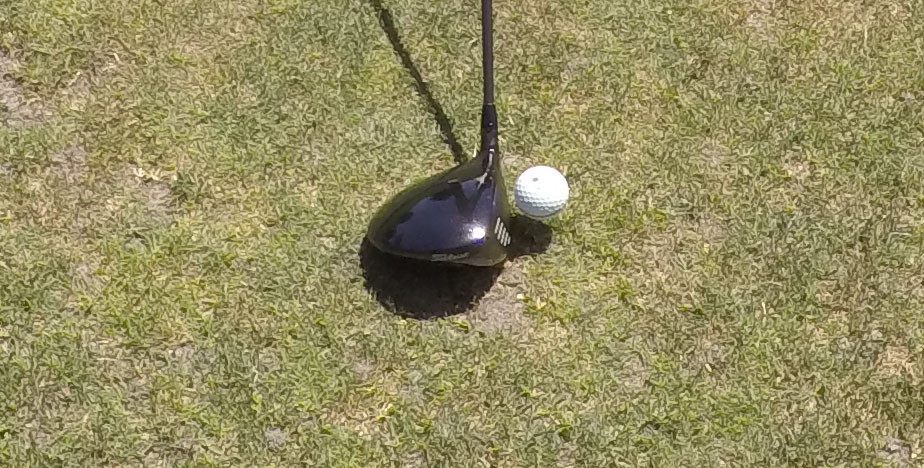How to Work Your Driver Both Ways
There isn't a golf club in your bag that can work the ball as effectively as a properly fit driver. When most people think about the driver, the first thought is always distance. How far do you drive the ball? People act like this is an accurate measure of a player's skill level. Distance is definitely one component but having control of your driver is far more important. The driver is the one club in your bag that can actually hit all 9 shots. Think about it for a second. Can you hit a low cut with a 8 iron? Maybe but it won't go very far. How about a high draw with a 3-iron? Not likely. The driver has the ability to be hit high, low, left or right with relative ease.
Hitting the Stock Driver

Drive for show and putt for dough is what they say. But one of the most important ingredients to a successful round of golf is good position off the tee. If you are constantly in the rough, it is very difficult to get the ball close to the hole. Playing from the fairway makes the game easier, stress free, and saves you money on golf balls. When hitting your driver you want remember the following:
- Your Grip is Everything
- Swing Within Yourself
- Aim Small, Miss Small
- Catch the Ball on the Upswing
Your grip is very important when hitting the tee shot. Your left hand is your power hand and your right hand is your direction hand. Too many times players over swing with their right hand because they are trying to generate power with it. You can't swing the club with power and direction coming from the same hand. Your left hand should be on top of the club or slightly strong. The "v" created between your thumb and index finger should point to your right ear.
Over swinging will only result in unsolid shots. The key to a good tee shot is making solid contact. Swinging the driver at 80-90% is more than enough power and allows you to have enough control to hit the fairway. Swinging hard doesn't mean the ball will go farther. In fact, most of the time it will go shorter. Let the club do the work.
Aim small, miss small. This is a technique should be familiar to anyone who has shot a gun or seen The Patriot. The same concept applies to driving the golf ball. You don't want to be vague with where you are aiming. You want to pick out a specific target in the distance. In case you miss your target, your miss will be close and hopefully still in the fairway.
Drivers are designed to launch high with very little spin. This is your chance to swing up on the ball and let loose. This does not mean that you should throw the clubhead at the ball. Always keep your hands slightly ahead of the clubhead. Picture someone sweeping with a kitchen broom. While they're sweeping their hands stay ahead of the broom head but travel upward through the sweep. As you are transferring your weight from your right leg to left, feel as if you are pulling the handle of the club up with your left hand.
Hitting the Draw

Hitting a draw with your driver can be very difficult for some. But the draw is an essential shot for increasing distance when you need it. The side spin created helps the ball to roll out when it lands and roll farther than a normal shot. Hitting a draw with your driver requires a few tweaks to your stock shot:
- Stronger grip with both left and right hands
- Keep your weight back
- Aim to the right and keep your stance closed
Putting your left hand on top of the club will ensure that you have enough power to turn the ball over. Your right hand should be slightly stronger than it is normally as well. If the "v's" created between your thumb and index finger normally point toward your right ear, they should be pointing toward your right shoulder for a draw. This will allow you to pull up with your right hand to turn the ball over instead of rolling your wrists. Many people think that rolling your wrists through the ball is how to turn it over. This is incorrect. Let your right hand pull up on the club with your right trigger finger.
Your weight should be 60/40 in favor of your right side. As you load up on your right side and transition down with the club, keep your weight slightly on your back foot allowing the club to pass before your body does. If you let your body get ahead of the club it is very difficult to turn the ball over and if you do it's usually a low flip that ends up in the left rough.
If you are going to hit the draw you better aim for it. Make sure your feet are aimed down the right side of the fairway with your shoulders parallel to your feet. Closing your stance will give you a feeling of turning around your body helping you to shape a draw.
Hitting a Cut

It's not going to go as far as hitting a draw or even a straight ball, but hitting the cut is very consistent. Usually the cut shot comes out higher than normal because you are hitting the ball on the upswing with an open face. Hitting the cut can help you to score better and cut corners on those difficult par 5's by:
- Your grip should be slightly weak with right hand
- Ball position slightly forward
- Open stance at address
- Transfer your weight
To hit a cut - your right hand needs to be on top of the club. The "V" that is formed in between your thumb and index finger should run directly down the top of the club. This will keep the face open at impact helping to create left to right spin.
Move the ball slightly forward - and open your stance and shoulders. Everything that has been discussed so far is a combination of slight tweaks. Nothing is major, you can calibrate as much or little as you want. Keeping your stance open will help to let your body clear through the ball on your down swing.
Transferring your weight - to your left side as you start the down swing will help to make sure your body clears the ball before your hands do. If your hands pass your body the result will be a pull draw. Let your body transfer its weight and let your hands try to catch up. The result will a slight cut that starts down the left side.
Hitting the High Driver
Launching the ball high into the air and watching it soar is one of the most satisfying feeling in golf. People love to see it and when it's done correctly it can make the ball travel extremely far. To hit the ball higher off the tee:
- Tee it higher
- move ball forward
- Make your grip stronger
Tee it high and let it fly! This slogan still stands true. Teeing the ball at least to the height of your driver will help you to launch the ball higher. Drivers are designed to be hit high on the face. Teeing it low won't do you any good, except make the ball spin more.
Moving the ball forward will give you more room to swing up on the ball. The more you swing up on the ball the higher it will launch and farther it will fly.
Making your grip stronger is something that most people forget. Since you are swinging up on the shot and it's slightly forward in your stance the normal tendency is to hit a shot that falls off to the right or just starts right. Make sure that you grip the club slightly stronger than normal so you can keep the club head square at impact.
Hitting the High Draw
Hitting the high draw with the driver is the most sought out shot in golf. Everyone wants the ball to fly far and roll out. To hit the high draw with the driver use the basic fundamentals to hit it high except:
- Make sure you stand further away from the ball
- Lift up with Trigger finger
- Close your Shoulders
To hit the high draw you want to have more extension than normal. Standing a little further away from the ball with help get extension in your swing and allow you to get a full shoulder turn.
As your begin your down swing be ready to pull up with your trigger finger. This is very key because this is the key to keeping the club head square or slightly closed at impact.
Closing your shoulders will help you to make a full turn giving you the best chance to pull off the high draw.
Hitting the Driver Low

Hitting your tee shot low can be one of the best shots in your bag. Whether you are into the wind or just trying to get the ball rolling, hitting it low can help you get the ball in position for your next birdie. Hitting it low requires you to:
- Put the ball back in your stance
- Tee it lower
- Keep your hands forward
Putting the ball further back in your stance will decrease the amount of upswing you will be able to create. Since you won't be able to swing up on it as much the trajectory is lower.
Teeing it lower does the same thing. Make sure that none of the golf ball is above the top of the clubface to ensure a low enough tee height for this shot.
Keeping your hands forward will let you still swing up on the ball while keeping the trajectory low. It is similar to hitting a punch shot but you are still swinging up on the ball. Since the ball is teed down lower it is harder to keep the face square at impact. More times than not the face will be open and produce a slice. Be sure to swing through the ball and don't forget to swing up with your right trigger finger.
Hitting the low cut
Since you are going to tee the ball low hitting a cut shouldn't require too much tweaking. If fact teeing the ball low and trying to hit your normal shot will most likely result in a slight cut as long as you keep the face of the club open at impact. It is important to remember when you tee it low your driver will create more spin, backwards and sideways, so use caution when teeing it too low.
As you can see the driver is a very versatile club and shot be used so. Don't be scared to hit the driver but be excited as it can hit more shots than any other club in your bag.